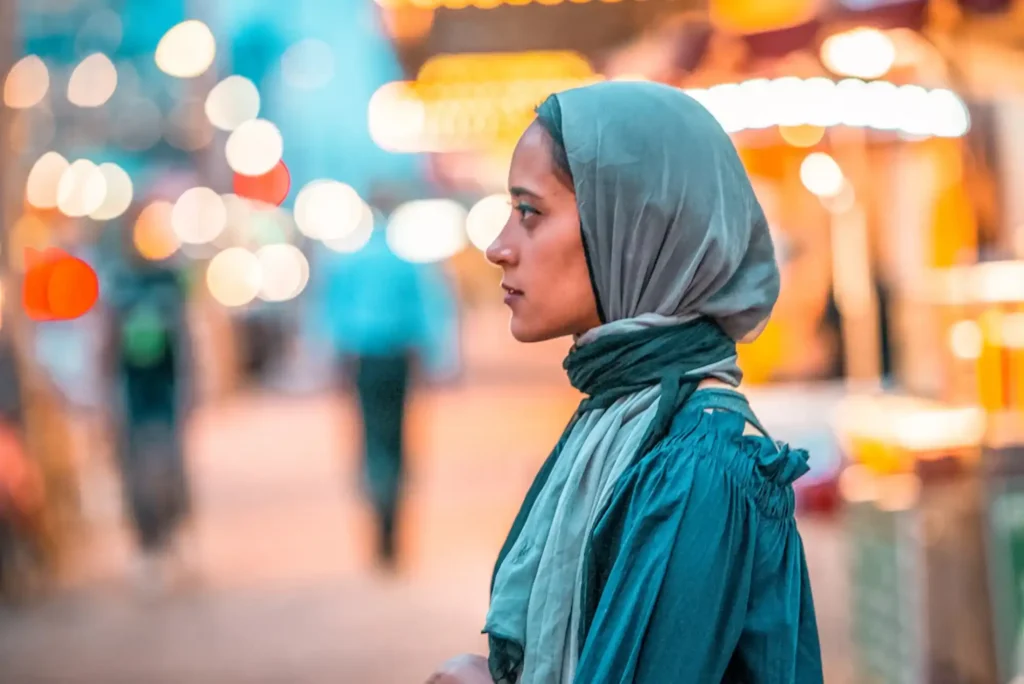Clothing is a significant aspect of cultural identity, and the way people dress is deeply influenced by their region, religion, history, and climate. When comparing the clothing worn in Cairo (Egypt) and India, we notice distinct differences rooted in cultural diversity, historical backgrounds, and environmental factors. While both regions have unique traditions and modern influences, their clothing styles are as varied as the people who live there.
Cultural Influence on Clothing
Cairo’s clothing styles are deeply influenced by the country’s Islamic heritage and Arabic traditions. Egypt has a long history of cultural influences that shape its fashion today. Traditional clothing often includes modest and loose-fitting garments, which reflect the Islamic values of modesty. The hot, dry desert climate also plays a significant role in the choice of materials and designs, favoring light and breathable fabrics.
India is a country of immense cultural diversity, and this is reflected in the wide range of clothing styles across its various regions. The clothing traditions in India are shaped by multiple religious and cultural influences, including Hindu, Muslim, Sikh, and more. This diversity results in a rich variety of clothing styles, from the more conservative to the highly colorful and vibrant. Additionally, India’s climate ranges from tropical to temperate, further influencing the choice of fabrics and styles.

Traditional Clothing in Cairo vs India
Cairo
In Cairo, traditional clothing is often based on comfort and modesty.
- Men’s Wear: The Galabeya, a loose-fitting robe, is one of the most common garments worn by men in Cairo. It is often paired with a head covering like a Keffiyeh or Turban for cultural or practical reasons. The Shalwar Kameez is another traditional outfit, consisting of a long tunic with loose pants.
- Women’s Wear: Women in Cairo often wear the Abaya, a long, loose-fitting cloak worn over other clothes, accompanied by a Hijab (headscarf) or Niqab (face veil). The Kaftan is also popular for formal occasions and offers a blend of modesty and elegance.
India
India’s traditional clothing varies greatly across the country’s diverse regions.
- Men’s Wear: In India, Kurta (a knee-length tunic) is a common garment worn by men, often paired with Churidars or Pyjamas. In some parts of India, men wear a Sherwani for weddings and special occasions, while others might wear a Lungi or Dhoti for daily wear.
- Women’s Wear: Women’s traditional attire includes the Saree, a long piece of cloth draped elegantly around the body, often worn with a blouse. The Salwar Kameez (loose pants paired with a tunic) is also common, as is the Lehenga Choli (a skirt and blouse combination), particularly for weddings and festive occasions. Dupattas (scarves) are often worn as accessories.
Modern Clothing Trends in Cairo vs India
In urban areas like clothing Cairo, there is a noticeable shift towards modern clothing, with many people adopting Western-style outfits. Jeans, t-shirts, and shirts are common, especially among the younger generation. However, even in these modern clothes, there is still a focus on modesty. Many young women prefer stylish yet modest attire, often wearing skirts or dresses paired with a jacket or headscarf. The influence of global fashion can be seen in Cairo, but it is balanced with the cultural need for modesty.
Modern clothing trends in India are similarly influenced by global fashion, with people in urban areas sporting jeans, t-shirts, dresses, and suits. Cities like Mumbai and Delhi are hubs for modern fashion, and international brands are easily accessible. However, India’s traditional attire continues to hold a special place, particularly during festivals, weddings, and religious events. The fusion of Western and traditional styles is prominent, with many people opting for modern cuts and fabrics but incorporating traditional elements, like embroidery or prints.
Role of Religion in Clothing Choices
In Cairo, the majority of people follow Islam, and religion plays a significant role in clothing choices. Modesty is a key principle in Islamic dress codes, especially for women. The Hijab or Niqab is often worn as a symbol of modesty, and clothing is chosen to cover most of the body. The preference for loose, flowing garments like the Galabeya reflects both cultural traditions and religious values.
India’s diverse religious landscape means that clothing choices are also influenced by various religious practices. For example, Muslims in India may wear clothing similar to those in Cairo, such as the Salwar Kameez and Dupatta, with women often wearing a headscarf. Hindu clothing is often more colorful, with women wearing Sarees in vibrant colors during festivals, while men might wear Kurta Pajama. Sikhs often wear Kurta with a Turban. Overall, religion impacts not only the type of clothing worn but also the colors and styles associated with different faiths.
Climate and Practical Considerations
Cairo’s hot, dry desert climate requires clothing that can keep people cool while also providing protection from the sun. Light fabrics such as cotton, linen, and silk are commonly used in traditional garments, allowing air to circulate while shielding the body from harsh sunlight. Loose-fitting clothing is also a practical choice for comfort, and many people wear sunglasses and hats to further protect themselves from the sun.
India’s diverse climate requires different clothing choices across the country. In tropical regions, cotton is the fabric of choice for everyday wear, as it is breathable and lightweight. In the northern parts of India, where winters can be quite cold, people wear heavier fabrics like wool, and layers are common. While cities are often modernized with air conditioning, traditional attire is still chosen based on local climates and weather conditions.
Key Similarities Between Cairo and India’s Clothing Choices
- Modesty: Both Cairo and India have cultural values that emphasize modesty in dress, particularly for women. Loose, covering garments are a shared characteristic.
- Cultural Influence: Both regions feature traditional clothing that reflects the historical and cultural influences of their societies, including religious significance.
- Colorful and Decorative Elements: In both Cairo and India, traditional clothing often features vibrant colors, intricate patterns, and embellishments, reflecting the festive spirit of their cultures.
Key Differences Between Cairo and India’s Clothing Choices
- Religious Influence: While both regions incorporate religious customs into clothing, Cairo’s dress is more influenced by Islamic customs, while India’s attire is influenced by a mix of Hindu, Muslim, Sikh, and other religions.
- Clothing Variety: India offers a broader variety of traditional attire due to its regional diversity, while Cairo’s clothing tends to follow the more uniform Islamic and Arab traditions.
- Climate Adaptation: While both regions wear lightweight clothing due to their hot climates, Cairo’s desert environment leads to more minimalist and practical clothing styles compared to India’s colorful and elaborate garments.
In, the clothing worn in Cairo and India, though both rooted in cultural and religious traditions, shows remarkable differences due to their distinct histories, climates, and religious practices. Cairo’s clothing tends to reflect Islamic modesty with simpler designs suited to its desert environment. In contrast, India’s diverse climate and cultural landscape offer a wide range of clothing styles, from the elegant Saree to the casual Kurta. While there are common threads of modesty and practicality in both regions, their clothing serves as a window into the rich cultural identities of their people.
Theresa Roemer’s net worth and Henry Ruggs’ net worth are often topics of interest due to their achievements in different fields. Theresa Roemer, a successful entrepreneur, author, and philanthropist, has amassed significant wealth through her ventures, including luxury goods and real estate. On the other hand, Henry Ruggs, known for his career in professional football, gained recognition for his talent and speed on the field. While the specific figures for Theresa Roemer’s net worth and Henry Ruggs’ net worth may vary, their financial success highlights the impact of their respective careers.











